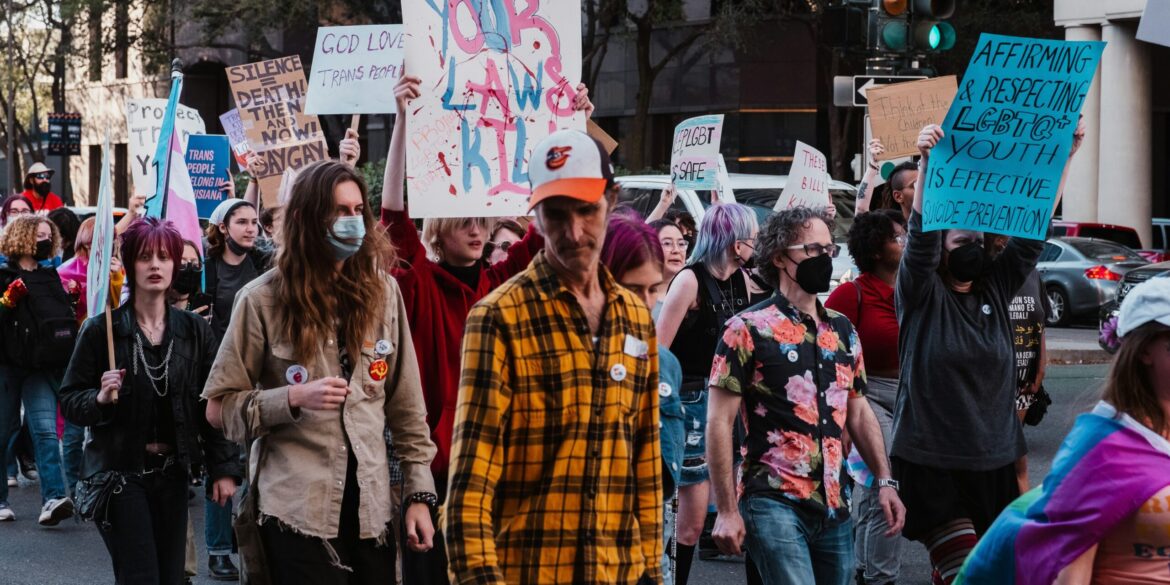The Trump administration’s aggressive actions toward California took a dramatic turn on June 12, 2025, as Immigration and Customs Enforcement (ICE) agents carried out extensive raids across Los Angeles and other parts of the state. This marked the latest escalation in a long-standing feud between the Trump administration and California’s leadership over immigration policies, sanctuary city laws, and environmental regulations. The raid was coupled with threats to reduce federal funding to the state, particularly for law enforcement and emergency services, in retaliation for California’s refusal to comply with certain federal immigration directives.
President Donald Trump has been openly critical of California for years, condemning its progressive policies, including its status as a “sanctuary state,” which limits cooperation between local law enforcement and federal immigration authorities. In response to California’s resistance to federal policies, the administration has intensified its actions, aiming to assert federal dominance in matters of immigration enforcement and public safety. The June 12 ICE raids were part of this broader strategy, designed to pressure state authorities into aligning with federal immigration policies.
Tensions reached a boiling point when National Guard units stationed in California were federalized, and U.S. Marines were dispatched to manage localized protests that erupted in response to the raids. The protests, which started as small gatherings of demonstrators in cities like Los Angeles and San Francisco, quickly grew into larger, more coordinated actions, with participants decrying the federal government’s heavy-handed approach and calling for an end to the administration’s crackdown on California.
The situation escalated further when Secretary of Homeland Security Kristi Noem, an ally of President Trump, traveled to Los Angeles to oversee the ICE raids. Noem, already a polarizing figure due to her strong support for Trump’s immigration policies, fueled the fire with inflammatory comments referring to the city of Los Angeles as a “city of criminals.” Her remarks were widely criticized, with many accusing her of demonizing the local population and inflaming tensions in an already volatile environment.
The confrontation took a dramatic turn during a press conference held by Noem, which was attended by various federal and state officials. The event took a tense turn when California Senator Alex Padilla, a staunch critic of the Trump administration’s actions, attempted to question Noem about the raids. According to reports, Padilla was forcibly removed from the press conference, handcuffed, and escorted out by federal agents. The incident was caught on camera and quickly spread across social media, sparking outrage not only in California but also nationwide. Critics of the administration saw the removal of a sitting U.S. senator as an unprecedented act of political repression, further deepening the sense of outrage surrounding the federal crackdown.
Meanwhile, the legal battle over the Trump administration’s control over California’s National Guard continued to unfold in the courts. A federal judge in San Francisco issued a temporary restraining order that blocked the federalization of the National Guard, arguing that the federal government overstepped its constitutional authority in taking control of state military units without state approval. However, this ruling was short-lived as a federal appellate court, believed to be more sympathetic to the administration’s stance, granted a temporary reprieve, allowing the federal control to remain in place, at least for the time being.
The Trump administration’s actions in California, including the ICE raids, the militarization of the National Guard, and the aggressive rhetoric surrounding the situation, have sparked widespread criticism from both state and national leaders. California Governor Gavin Newsom, who has been a vocal opponent of the administration’s policies, condemned the raids as part of a broader pattern of federal overreach. He called the ICE raids an unconstitutional violation of state sovereignty and vowed to fight back through both legal channels and public protests.
The nationwide protests that followed the events of June 12 were an expression of solidarity with California, as well as a broader condemnation of the Trump administration’s immigration policies. Demonstrations took place in cities across the country, including New York, Chicago, and Washington, D.C., where protesters gathered outside federal buildings, marching in opposition to the raids and the militarization of the state. Many protesters expressed concerns over the erosion of civil liberties and the federal government’s increasing use of military force to assert control over states that disagree with its policies.
The timing of the protests coincided with President Trump’s planned military parade, which was meant to showcase U.S. military strength. The planned parade, initially announced to commemorate Independence Day, has been criticized by many as an extravagant display of power that could further alienate Americans who already feel marginalized by the administration’s policies. The combination of the parade and the nationwide protests only served to intensify the ongoing national debate over the role of the federal government in state affairs, and whether President Trump’s actions are a sign of a broader authoritarian shift in U.S. governance.
As the situation unfolds, political analysts suggest that the confrontation between the Trump administration and California could set a precedent for future conflicts between federal and state governments, particularly as tensions over immigration, law enforcement, and states’ rights continue to simmer. The ongoing protests and legal battles will likely keep the issue in the national spotlight in the weeks to come, raising critical questions about the balance of power between the federal government and the states, and whether the political divisions in the country can be bridged.
For now, the story remains one of intense political and legal conflict, with widespread public backlash against the administration’s approach. The events in California have only heightened the already tense atmosphere leading up to the 2026 presidential election, with many wondering whether the ongoing protests and the increasingly polarized national climate will influence the outcome.

